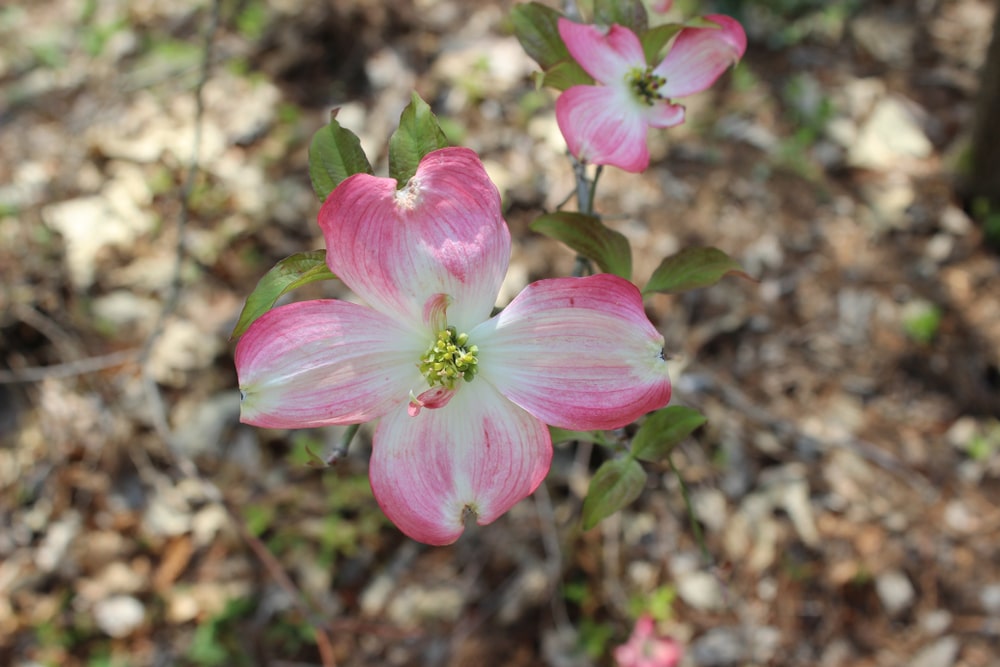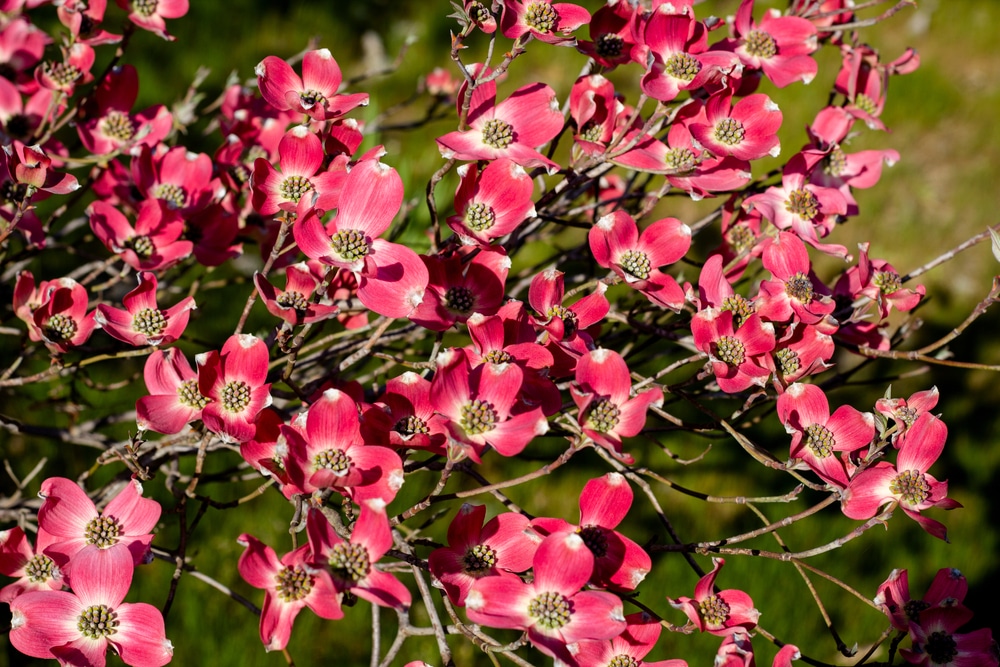Dogwood trees have grown in popularity for decades due to their beautiful flowers, pretty foliage, and is low-maintenance. Although the Cherokee brave and Cherokee chief dogwoods are similar, there are a few distinctions between them.
Cherokee Brave vs Cherokee Chief Dogwood Differences

Here are the primary differences between the Cherokee Brave and Cherokee Chief Dogwood trees.
Flowers
One difference between each of these dogwood trees is their flower color. Cherokee Brave trees feature reddish-pink petals. The centers of the flowers are white, adding more visual interest to their mosaic-like blooms.
While similar, Cherokee Brave dogwood trees have rich red flowers gradually fading to white in the center.
Leaves
Cherokee Brave dogwood trees have stunning flowers and decorative foliage, especially in springtime when it’s a reddish-purple shade. In the summer, the red fades to a brown-green or bronze color.
The Cherokee Chief tree also has red leaves, which aren’t as vibrant and don’t stay as long as the other variety. In summer months, the leaves turn to a pure green color.
Additionally, the Cherokee Brave foliage tends to have more leaves than Cherokee Chief trees. Cherokee Brave trees have more branches, though the difference is hardly noticeable. But still, there is a slight difference.
Both trees have stunning fall foliage. In autumn, their foliage turns to a beautiful bright red shade. Once the leaves fall, you’ll be able to see berries filling the branches, giving these trees an additional decorative effect.
Growth Rate and Size
Cherokee Chief dogwood trees are slightly smaller than the Cherokee Brave tree, reaching up to 20 feet tall and 30 inches wide. The Cherokee Brave dogwoods grow more quickly, energetically reaching a mature size of 30 feet in height and 35 feet in width.
This is a larger-sized tree you’ll need to ensure you have plenty of space in your yard. Not only do you need to account for the size, but you’ll need to provide plenty of room for growth and air circulation.
On the other hand, the Cherokee Chief is more compact and will work well for smaller or average-sized yards. Like the Cherokee Brave tree, you’ll need to allocate adequate space for growth and airflow.
Diseases
Luckily, dogwoods are more disease-resistant than other trees overall. However, Cherokee Brave trees cope with fungal diseases slightly better than Cherokee Chief dogwoods.
In either case, the most prominent diseases dogwood trees face are powdery mildew and anthracnose. That said, Cherokee Brave dogwoods typically don’t have a problem with either disease unless there is prolonged rainy weather.
Alternatively, Cherokee Chief trees aren’t as disease-resistant. However, you can successfully grow and avoid such issues by spraying it with fungicide each season.
Care Requirements

The Cherokee Brave and Cherokee Chief dogwoods have similar care requirements. Here is how to care for each tree.
Light and Temperature Needs
Cherokee Brave and Cherokee Chief dogwood trees can grow well in USDA Hardiness Zones 5-9. In 5-6 zones, dogwoods will need full sun (6-8 hours of direct sunlight.) However, they’ll do even better if they can get 10+ hours of sun.
Dogwood trees require partial shade in the south, where zones are 8-9. In these zones, too much sun can cause the flowers to burn or not have as rich colors. Plant these trees where they can get roughly six hours of morning sun with shade the rest of the day in these climates.
Water and Soil Needs
Once dogwood trees are mature, they don’t require a lot of watering. Giving your trees plenty of water during droughts should be sufficient. Choose a site for your trees with well-drained soil that doesn’t get too dry. Soil high in organic matter with a pH of 6.1-7.0 is best.
Fertilizer
Neither the Cherokee Brave nor Cherokee Chief dogwood trees require a lot of fertilizer. Over-fertilization may improve growth initially but can hinder growth in the following years. If you have poor soil, decomposing organic fertilizer in spring can help. To help enhance the blooms, use a potassium fertilizer as well.
You may also be interested in finding out more about the Cherokee princess dogwood.